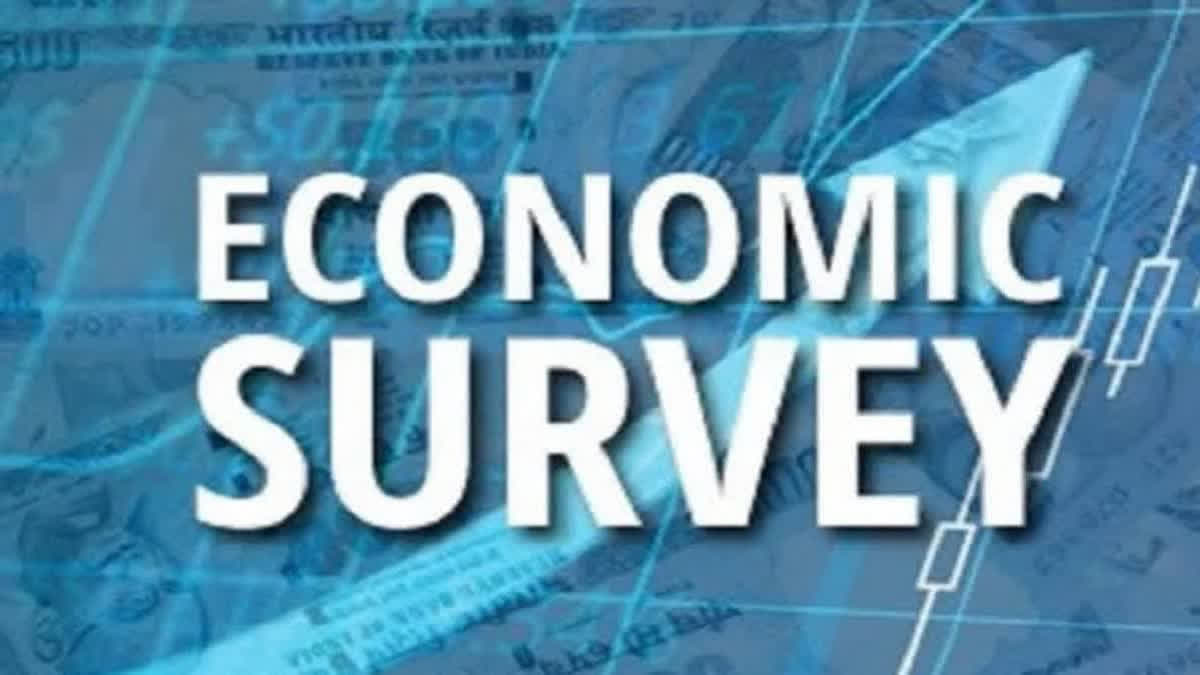New Delhi: Emphasizing the need to decrease the study cost for medical education in India, the Economic Survey 2024-25 on Friday stated that, “By reducing the cost of medical education, we can contribute to lowering healthcare service costs. If universal coverage is the goal, prioritising cost and equity in medical education will be key to achieving it.”
The National Medical Commission (NMC) has issued guidelines for the determination of fees and all other charges with respect to 50 per cent of seats in private medical institutions deemed to be universities.
“Despite such measures, fees remain high – at Rs 60 lakh to one crore or more in the private sector which holds 48 per cent of MBBS seats. This highlights the opportunity to make medical education more accessible and affordable for all, particularly for those from less privileged backgrounds. By reducing the cost of medical education, we can contribute to lowering healthcare service costs. If universal coverage is the goal, prioritising cost and equity in medical education will be key to achieving it,” the economic survey tabled in the Parliament by finance minister Nirmala Sitharaman said.
Medical Students Go Abroad
The consequence, as per the economic survey, is that every year thousands of students go abroad to around 50 countries especially those with lower fees such as China, Russia, Ukraine, Philippines, and Bangladesh. Medical education abroad entails hardships of studying abroad and productive years of youth invested in repeated attempts at exams - the NEET-UG before taking admission, the Foreign Medical Graduates (FMG) examination on completing the course and then completing compulsory internships of 12 months in India.
FMGs in China (during COVID lockdowns) and Ukraine (as the conflict escalated), had to return to India dropping their education and facing uncertain prospects. The subsequent regulatory issues in addressing the difficulties faced by FMGs and the need to maintain standards in allowing them to practice in India have been a challenge and have required interventions of the courts on more than one occasion.
“The very low pass percentage of FMGs in the qualifying exam (16.65 per cent in 202385) indicates sub-par quality of medical education abroad including lack of clinical training. As policy intervention to dissuade medical education abroad is crafted, keeping costs in India within reasonable limits is essential,” the economic survey highlighted.
Opportunities For Medical Education
The report said that the availability of opportunities for medical education appears to be geographically skewed, apparent from the fact that 51 per cent of undergraduate seats and 49 per cent of postgraduate seats are in the southern states.
“Further, the availability is skewed in favour of urban areas with the urban-to-rural doctor density ratio being 3.8:1. These patterns tend to follow the pattern in the availability of healthcare services in general. It has been estimated that 75 per cent of dispensaries and 60 per cent of hospitals are in urban areas, where 80 per cent of doctors serve. The imbalance in distribution can be attributed to the state/region level of economic development, demand for and expansion of healthcare services, and increasing market for medical value travel,” the economic survey said.
The growth in the number of medical practitioners offers a prospect of improving the distribution of healthcare professionals across regions. “While many graduates and specialists prefer to practice in their home states or in major cities due to better amenities and professional opportunities, this presents a chance to enhance healthcare access in rural and underserved areas. By offering incentives, improving infrastructure, and fostering professional growth in these regions, we can attract and retain healthcare professionals, ensuring a more balanced and equitable distribution of doctors to strengthen public healthcare services nationwide,” it said.
Specialisations
There is also a skewed distribution of seats in favour of specialisations like radiology, dermatology, gynaecology, and cardiology while specialities like psychiatry, geriatrics etc., are neglected. The current shortage of specialists across specialities will further aggravate streams that are currently not preferred but will be required in the future. Demand for postgraduate education is not restricted by the need for clinical practitioners, these doctors form the resource pool for research and development in advanced fields of medicine, pharmaceuticals, biotechnology etc. They are also crucial as faculty and trainers of the next generation. While we focus on increasing facilities for specialisations it is also necessary to maintain distribution across geographies and streams.
Remuneration
Market estimates indicate that remuneration of fresh graduates is around Rs 5 lakh and senior doctors earn between Rs 12.5 -18.4 lakh per annum in cities. This is almost similar or lower to the packages that are available to other graduates at the entry-level.
“The attraction towards the medical profession, as seen from the consistently increasing number of aspirants, seems to arise more from the social status attached to it rather than its earning potential. This may mean that the availability of meaningful work and commensurate remuneration may reduce with an increase in the number of doctors available in the future. This would reinforce the already occurring migration of doctors from India into greener pastures.” The report said.
The OECD countries reported in 2021 that there were close to 19,000 physicians from India in their workforce and migration in 2021 alone was over 2800 physicians. Increased public and private sector investments in medical education is in effect creating a global health workforce. The trends in migration need to be factored in while incentives for service in the public health system are calibrated to ensure the availability of doctors in rural areas.
